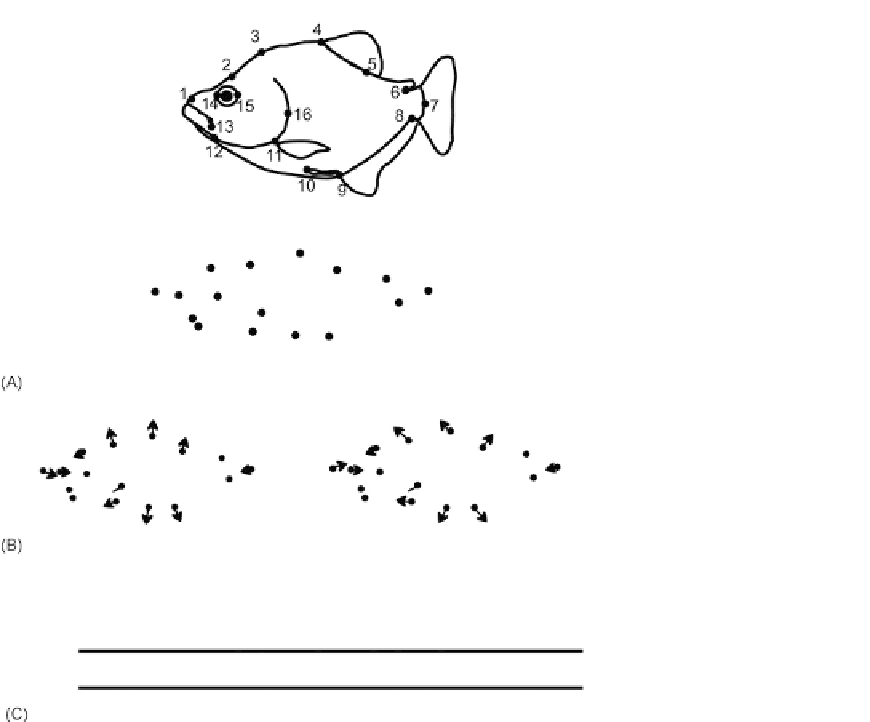Biology Reference
In-Depth Information
FIGURE 11.19
Change in the
spatiotemporal pattern of develop-
ment confined to late development.
(A) Superimposed coordinates of
juvenile shapes; (B) ontogenies of
shape; (C) lengths of ontogenetic
vectors of shape. The two species
have the same shape at the outset
of the measured phase, but subse-
quently follow different ontogenies
of shape; they do not differ in the
length of their ontogenetic vectors.
randomly permuting species affiliations of the data. Should the observed distance lie out-
side the 95th percentile for the random distribution of distances, the null hypothesis of no
difference in elevation is rejected.
The remaining hypotheses predict that ontogenetic trajectories diverge; what differs
among them is what else differs. Should all change be confined to late morphogenesis, we
would expect to see no difference between the shapes of the two species at the youngest
comparable developmental stage (
Figure 11.19A
), a difference in their ontogenies of shape
(
Figure 11.19B
) and no difference in length of the trajectories (
Figure 11.19C
). The remain-
ing hypotheses differ from this one in that they predict differences in either shape at the
outset of the comparable phase and/or length of the trajectories. They also differ in
whether the multiple changes lead to greater divergence in the adult shape(s) compared to
that between the youngest comparable age. Testing these hypotheses requires comparing
shapes at the youngest comparable age, comparing the directions of the ontogenetic trajec-
tories of shape, comparing the lengths of the trajectories and comparing the distances
between the youngest and oldest comparable stages. Comparisons between shapes at the


